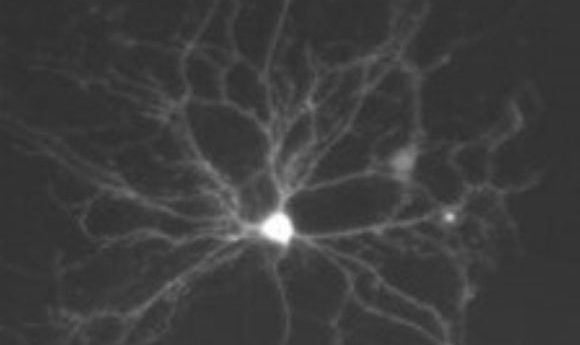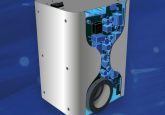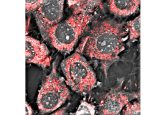A controllable Illumination System for neuroscience discovery

Find out how the CoolLED pE-4000 is advancing neuroscience research in Hungary
Researcher Attila Szücs from Eötvös Lóránd University (Hungary) and his team utilise electrophysiology and optogenetics to study the regulation of intrinsic excitability – for example, how different forms of stimulus at the synapse determine neuronal firing. This aspect is really important in the mechanisms which underlie learning and memory storage.
In his lab, the ability to precisely stimulate neurons is of utmost importance, and to drive the firing of neurons under dynamic patch clamp conditions (where the current can be modulated in real time and the effect on action potential directly analysed) they use synaptic stimulus waveforms synthesised by computer.
23871
Channelrhodopsin-2 and eYFP-expressing neuron used for electrophysiological recording
For optogenetic stimulation, they use the CoolLED pE-4000. The TTL control of the Illumination System allows them to deliver fast, precisely timed sequences of light and evoke action potentials in neurons expressing channelrhodopsin-2.
These protocols can effectively simulate synaptic bombardment and they can precisely control the strength and temporal pattern of the input waveforms. One interesting application is to study various forms of membrane resonance when the synthetic stimulus waveforms are of the oscillatory type. This phenomenon is related to how neurons synchronise at a network level, but there is still much more to understand.
To find out more on this research:
- Szücs, A. & Huerta, R. (2015). J Neurophysiol, 113, 232-243.
- Szücs, A., Rátkai, A., Schlett, K. & Huerta, R. (2017). Eur J Neurosci, 46, 2429-2444.
- Hernáth, F., Schlett, K. Szücs, A. (2019). Scientific Reports, 9: 13096.
The controllable pE-4000 Illumination System
- 16 selectable LED wavelengths
- Four channels
- Function generator for optogenetics
- Range of control options including TTL and USB
- Broadest and most versatile illumination system available
Compatible with filters and fluorophores of almost any microscope.
Learn more about CoolLED here.





